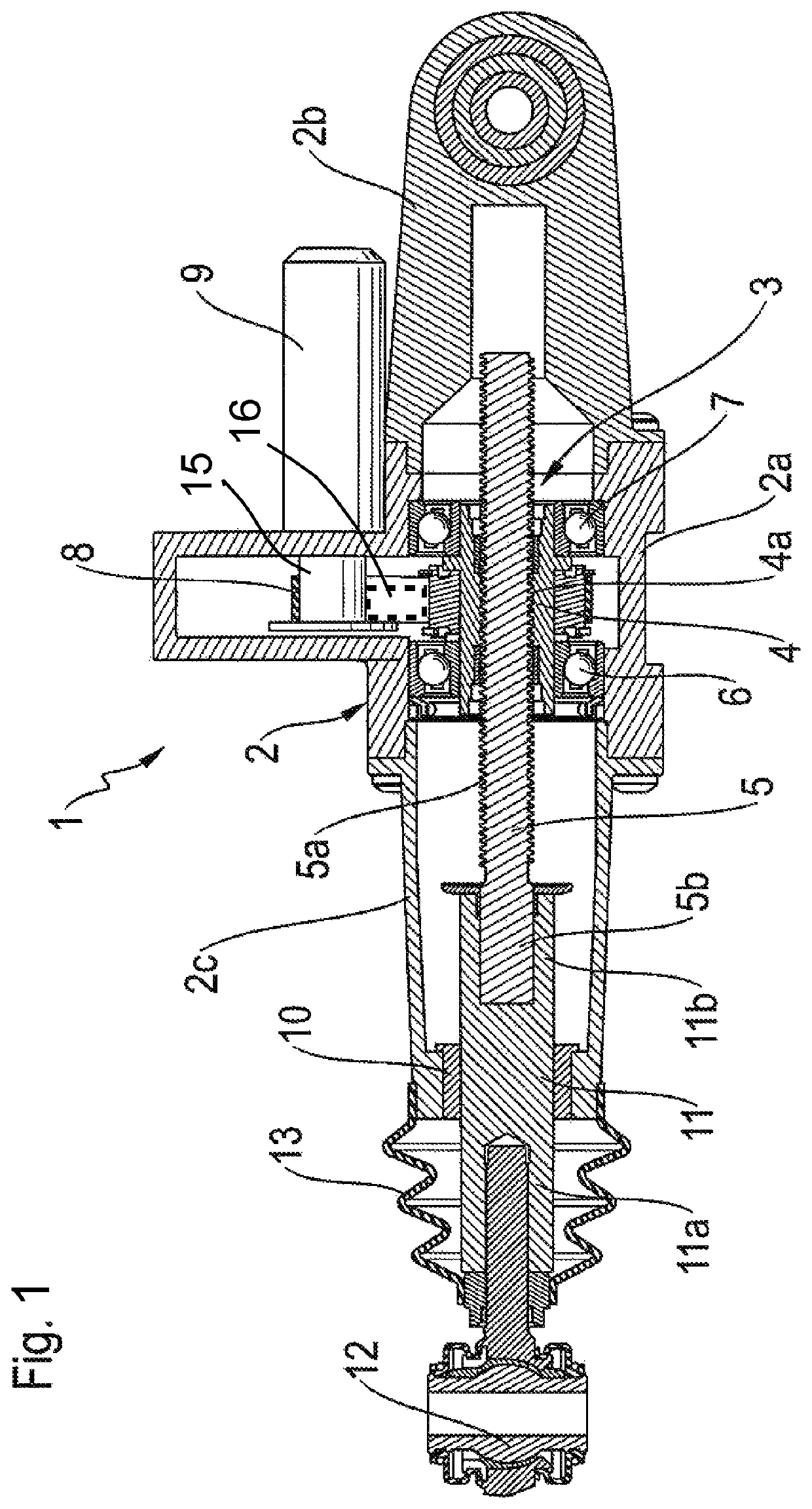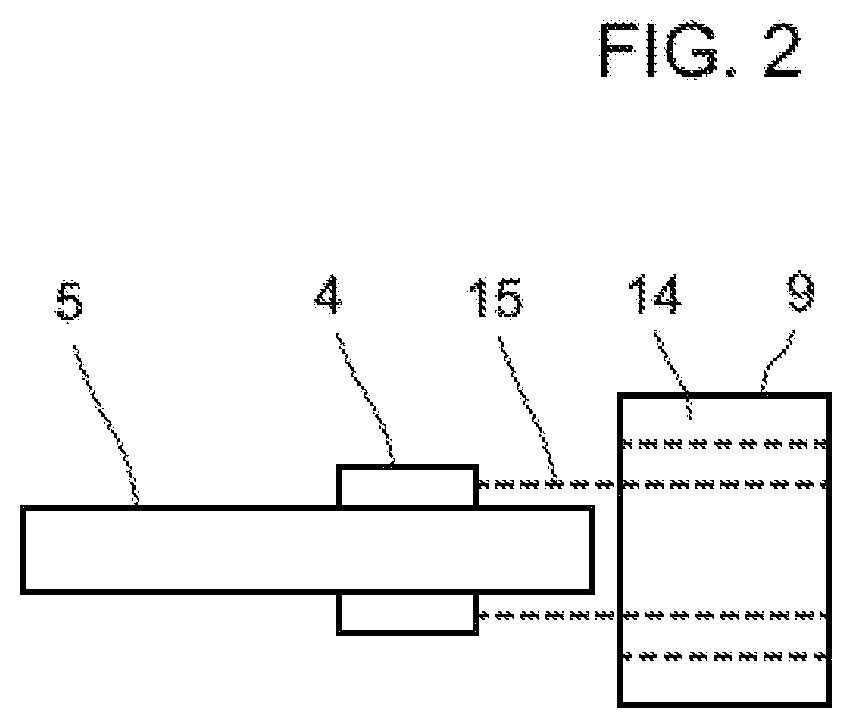Steering system with an actuating device, and use of the steering system with actuating device
a technology of actuating device and steering system, which is applied in the direction of mechanical equipment, transportation and packaging, and transportation, can solve the problems of occupying a lot of space, and achieve the effects of high efficiency, improved volume efficiency, and high torqu
- Summary
- Abstract
- Description
- Claims
- Application Information
AI Technical Summary
Benefits of technology
Problems solved by technology
Method used
Image
Examples
Embodiment Construction
[0019]FIG. 1 shows a longitudinal section of the structure of a simple electric actuator 1 (also referred to as an actuating device), i.e. one that acts on only one wheel, for a rear axle steering system of a motor vehicle. The actuator 1 has a multi-component housing 2 in which is arranged a spindle drive 3 comprising a spindle nut 4 and a spindle 5 that engages with the spindle nut 4 and can be displaced axially. The spindle 5 has a spindle thread or outer thread 5a and the nut has a nut thread or inner thread 4a, which are in the form of a movement thread, preferably a trapezoid thread. The spindle nut 4, which is supported rotatably in the housing 2 by two roller bearings 6 and 7, is driven via a belt drive 8 by an electric motor 9. As an alternative, the electric motor 9 has a rotor 15 which indirectly drives the spindle nut 4 by means of interposed gearing 16 in the form of a drive gear and which is diagrammatically shown with dashed lines in FIG. 1. The housing 2 comprises th...
PUM
 Login to View More
Login to View More Abstract
Description
Claims
Application Information
 Login to View More
Login to View More - R&D
- Intellectual Property
- Life Sciences
- Materials
- Tech Scout
- Unparalleled Data Quality
- Higher Quality Content
- 60% Fewer Hallucinations
Browse by: Latest US Patents, China's latest patents, Technical Efficacy Thesaurus, Application Domain, Technology Topic, Popular Technical Reports.
© 2025 PatSnap. All rights reserved.Legal|Privacy policy|Modern Slavery Act Transparency Statement|Sitemap|About US| Contact US: help@patsnap.com


